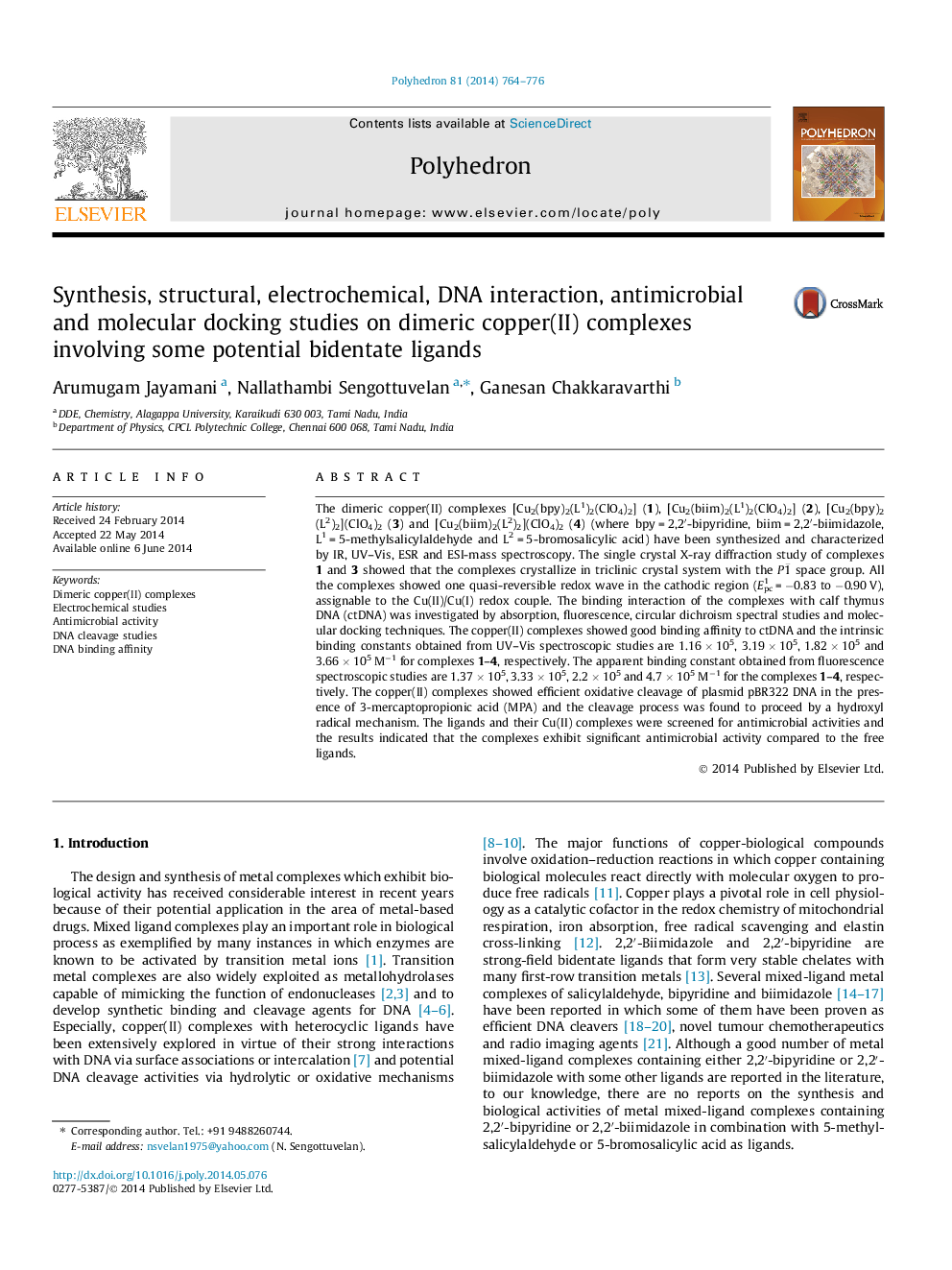| Article ID | Journal | Published Year | Pages | File Type |
|---|---|---|---|---|
| 1334491 | Polyhedron | 2014 | 13 Pages |
The dimeric copper(II) complexes [Cu2(bpy)2(L1)2(ClO4)2] (1), [Cu2(biim)2(L1)2(ClO4)2] (2), [Cu2(bpy)2(L2)2](ClO4)2 (3) and [Cu2(biim)2(L2)2](ClO4)2 (4) (where bpy = 2,2′-bipyridine, biim = 2,2′-biimidazole, L1 = 5-methylsalicylaldehyde and L2 = 5-bromosalicylic acid) have been synthesized and characterized by IR, UV–Vis, ESR and ESI-mass spectroscopy. The single crystal X-ray diffraction study of complexes 1 and 3 showed that the complexes crystallize in triclinic crystal system with the P1¯ space group. All the complexes showed one quasi-reversible redox wave in the cathodic region (E1pc = −0.83 to −0.90 V), assignable to the Cu(II)/Cu(I) redox couple. The binding interaction of the complexes with calf thymus DNA (ctDNA) was investigated by absorption, fluorescence, circular dichroism spectral studies and molecular docking techniques. The copper(II) complexes showed good binding affinity to ctDNA and the intrinsic binding constants obtained from UV–Vis spectroscopic studies are 1.16 × 105, 3.19 × 105, 1.82 × 105 and 3.66 × 105 M−1 for complexes 1–4, respectively. The apparent binding constant obtained from fluorescence spectroscopic studies are 1.37 × 105, 3.33 × 105, 2.2 × 105 and 4.7 × 105 M−1 for the complexes 1–4, respectively. The copper(II) complexes showed efficient oxidative cleavage of plasmid pBR322 DNA in the presence of 3-mercaptopropionic acid (MPA) and the cleavage process was found to proceed by a hydroxyl radical mechanism. The ligands and their Cu(II) complexes were screened for antimicrobial activities and the results indicated that the complexes exhibit significant antimicrobial activity compared to the free ligands.
Graphical abstractThe dimeric copper(II) complexes have been synthesized and characterized. Complexes 1 and 3 crystallize in triclinic crystal belonging to P1¯ space group. The copper(II) complexes showed good binding affinity to ctDNA. Complexes showed efficient oxidative cleavage of plasmid pBR322 DNA in presence of MPA proceeded by hydroxyl radical mechanism.Figure optionsDownload full-size imageDownload as PowerPoint slide
